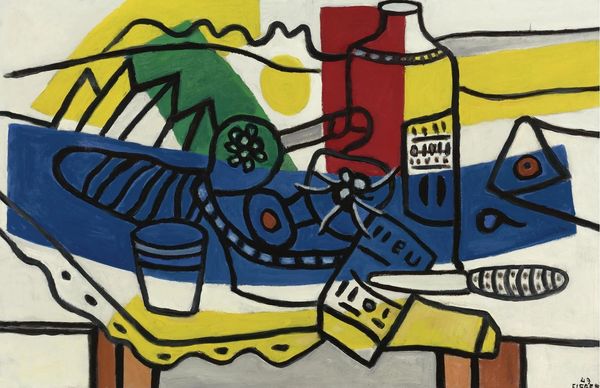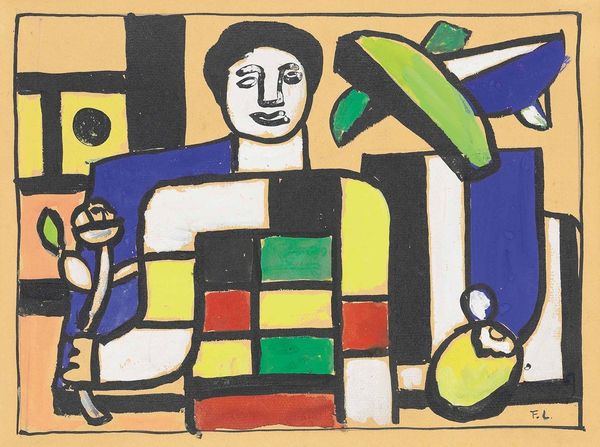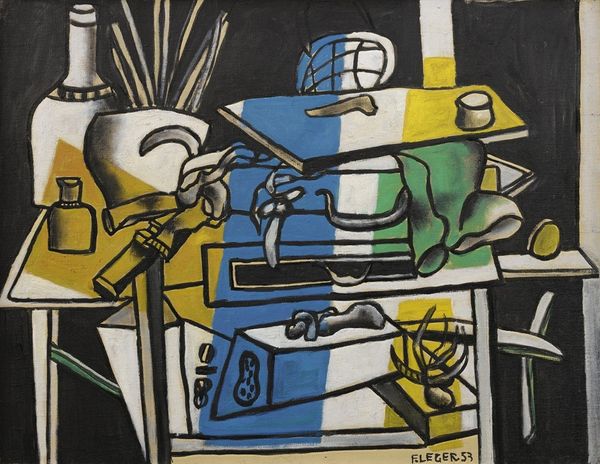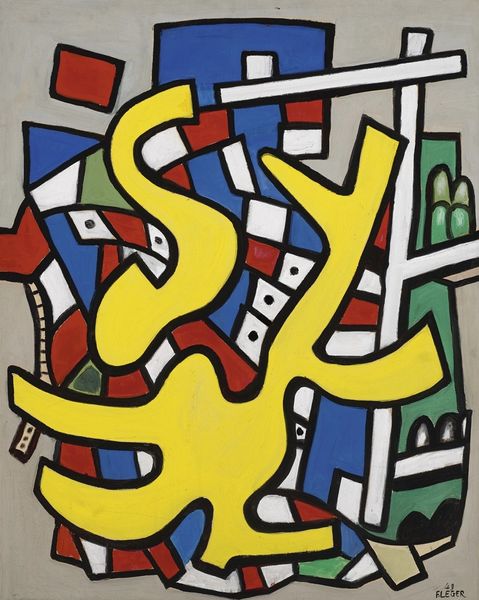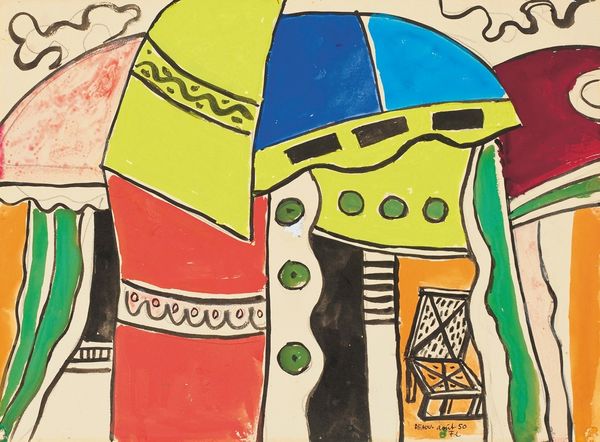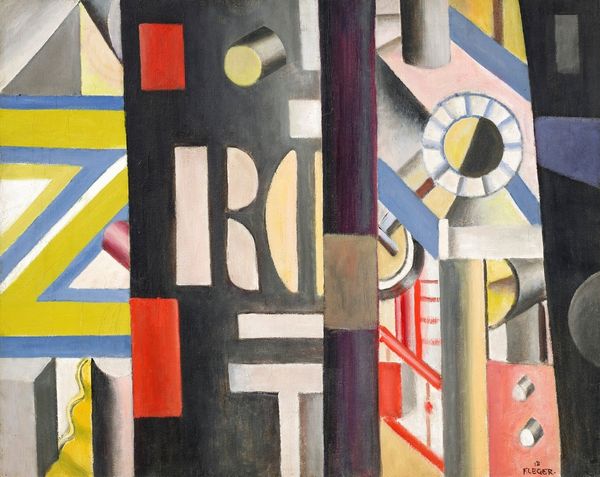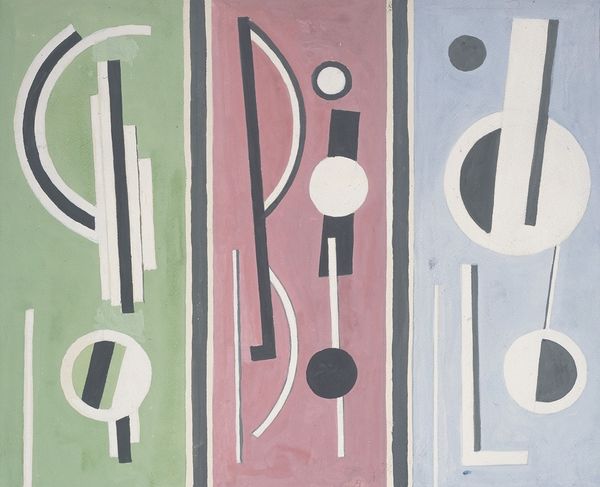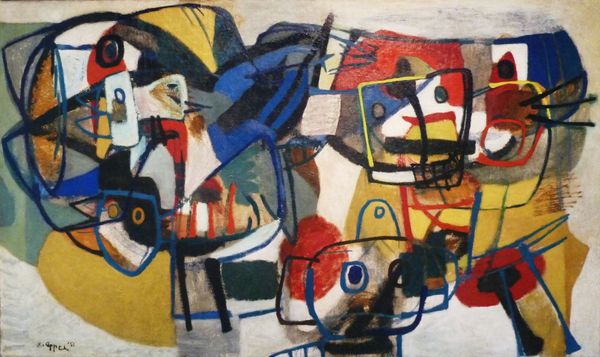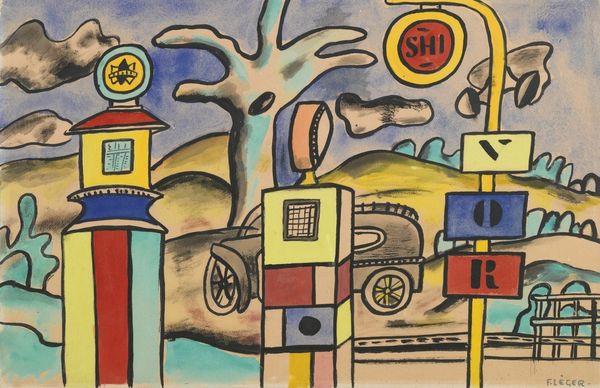
painting, oil-paint
#
cubism
#
painting
#
oil-paint
#
caricature
#
pop art
#
abstract
#
geometric
#
abstraction
Copyright: Modern Artists: Artvee
Editor: We’re looking at Fernand Léger’s 1938 oil painting, "Nature morte bleue et jaune"—Still Life, Blue and Yellow. It's quite striking! The geometric forms are bold and separated with hard edges; the palette is restricted but inviting, with contrasting sections of warm and cool colors. What is your reading of it? Curator: Considering Léger's interest in the industrial world and its impact on society, this "still life" seems to be about modern life more broadly than the arrangement of objects themselves. What objects are arranged in the painting? Do they feel domestic or like tools? Editor: Well, not really! They look like abstractions of everyday items and industrial elements, devoid of clear reference to familiar objects but recalling mechanical shapes, yet arranged as if fruit in a bowl! Curator: Precisely! After the devastation of WWI, artists looked to integrate beauty with machinery. The sharp forms and pure colors signify optimism, presenting a visual equivalent to efficiency and function. This work shows his utopian ideals—the promise of machines integrated with, rather than replacing, human activity. The political implications in times of socio-economic distress are relevant here! Editor: I never thought about the cultural backdrop affecting a "still life"! Do you think he's commenting on the rise of industry in response to economic problems? Curator: Indeed, and the hope, or at least the aspiration, that technology can be a force for good, integrating with the familiar to promote shared goals! What do you make of that position today? Editor: Interesting question... Léger seems to present the Machine Age as hopeful. Now, technological advancement inspires fear and even dread alongside progress. Thank you. I'll have to look into it further! Curator: My pleasure! Looking closely at its public role gives us valuable perspective, doesn't it?
Comments
No comments
Be the first to comment and join the conversation on the ultimate creative platform.

